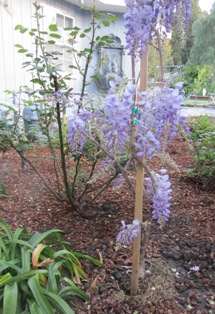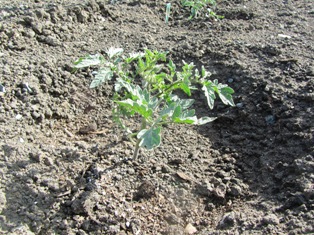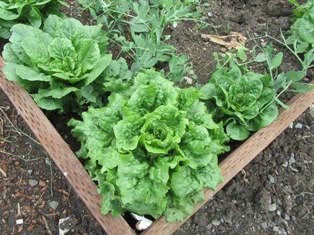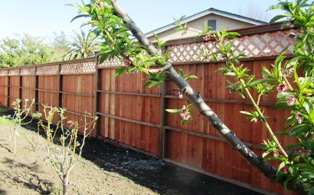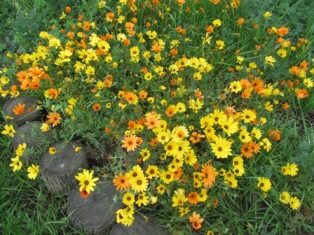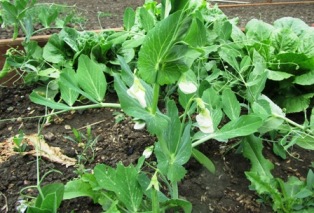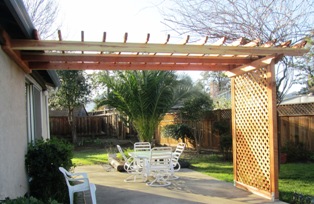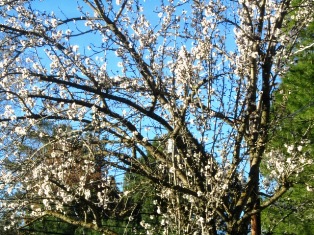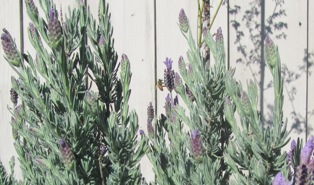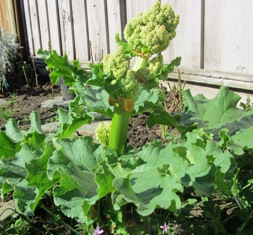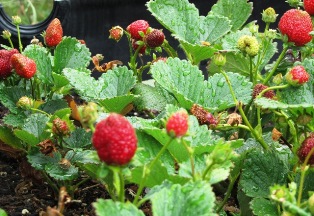Archive for March, 2013
Spiffing up the Farmette for Easter
Finding inspiration in books I wrote long ago, I ‘ve been sprucing up the house and grounds in time for Easter weekend. Family and friends will be visiting. Rain has helped our roses to start blooming and the wisteria is manifesting gorgeous purple bracts in a new garden area where we’ve planted a dozen new rose bushes.
The richly woven linen-and-silk tablecloth I purchased at a sidewalk market in Greece (during the writing of my Everything Women of the Bible book) provides a formal look to the dining table. I added matching napkins and some vanilla- and mocha-colored candles in tall stemmed crystal holders to create a formal look.
In the living room against a raspberry colored wall, I positioned on the piano a pair of French style lamps with tall top hat shades. The ambiance of the informal but warm living room seems to invite conversation.

The Nyjer seed feeder beyond the kitchen window attracts finches while daffodils on the window sill cheer the cook
I love the greenhouse window in the kitchen but hanging a bird feeder outside reminds me (and my visitors) that here on the farmette, nature is never far away. Looking through the window from the kitchen got me thinking about flowers and floral patterns.
Years ago, I wrote a book titled, Blooming Rooms, with my friend and fellow writer A. Bronwyn Llewellyn. We divided up the writing of the chapters based on rooms of a house. She wrote the chapter on kitchens and one of her brilliant ideas was to decoupage a serving tray with antique flower seed packets. Thinking about that book inspired me to bring some flowers into my kitchen. I searched for a pretty vase, filled it with water, and plunge into it a fistful of daffodils.
Finally, I believe our little home sweet home is ready to receive company.
Gardening by the Moon
Birthdays come around every year, like perennials. Mine was yesterday.
It just might be the most fortuitous birthday I will ever have. Why? Because it fell on the second day of Holy Week, the first night of Passover, and a full moon night (according to Old Timers, the best lunar phase to plant). So . . . I planted a garden.
Pole beans, corn, vining tomatoes, and sweet garden peas supposedly germinate faster during a full moon because of geotropism (gravity’s effect on plants), or so say those who believe in planting by the moon. Old Timers say the beans will race up the poles if you time their planting in alignment with the lunar cycle of a full moon.
All I know is that when the last tomatoes were in, the light of that humongous moon was spilling over inch of the farmette. I plucked a sprig of lavender and lifted it to my noise to inhale its sweet, clear scent. I sank onto my garden swing and kicked off my clod hoppers. It was time to celebrate.
Grow Seeds, Grow
I loved that command, “Grow seeds, grow,” when I first read it in Arnold Lobel’s book about Frog and Toad, two best friends. Now that I’ve planted seed flats with heirloom seed, I water and watch it daily for signs of life. And that command to the seeds keeps popping into my mind.
What is growing and rapidly is the purple Chinese wisteria that we planted in the area we’ve designated as a sitting area in the garden. It already has a concrete slab large enough for a car. We plan to tile that concrete with a pretty backyard patio tile and build a trellis around it to support the wisteria.
Also growing are the baby apricots that have formed as the blooms leave the tree in the wind or by dropping to the ground. The peaches are swelling in size as are the almonds on the tree that we cut so severely that my neighbor thought it might not recover. It has.
The garden will rapidly take off with another rain and the forecasters say we have chance for showers on Tuesday, my birthday, and the beginning of Passover. Surely the timing will be auspicious for my garden.
Tortoise Alert
We have been working like crazy the last few days, busily applying the finishing touches to the redwood fence we are building for our neighbors. We are pushing because they have scheduled a party on Saturday to celebrate the birthday of the youngest member of their family. He turns one year old.
Around noon, above the cacophony of hammers pounding and saws buzzing, we hear our neighbor’s voice call out, “Has anybody seen the turtle?” He was referring to the family pet, an African Spur Thigh Tortoise, who’d taken off from his designated area of the yard and was no where to be found.
We dropped our saws, laid down our hammers, and started searching the three yards that conjoined at a certain point along the fence lines. We looked under the recently raised shed and searched the perimeter of two neighbor’s yards until finally a voice called out, “Found him.”
The pet tortoise had moseyed over to the kids’ play area and had found a shady spot to its liking. There it seemed to be enjoying itself, hanging out, without the concern that its absence was causing its owner.
After a few minutes, Carlos and I and our worker, Alejandro, resumed our tasks. After all, the fence had to be finished. The party was less than 24 hours away.
I had to wonder why the tortoise felt the need to find shade. Its species is at home in the hottest, driest, desert type places on earth, for example, in Northern Africa: Senegal, Niger, Chad, Ethiopia, and The Sudan. But maybe it wasn’t the sunshine it was seeking to escape but rather the noise. I guess we were making quite a racket with our hammers, saws, and shovels.
First Day of Spring Brings Rain and Wildflowers
Nothing says “Spring” more than showers and wildflowers, unless, of course, it’s lettuce and fresh peas. Here on the farmette today, we had them all. The wind blew through a shower of tropical moisture throughout the night and the sprinkles perked up the cool season vegetables growing in our garden.
This morning I discovered a patch of wildflowers blooming in riotous colors. In the grow boxes along one side of our property, the lettuces had swelled to into plump-and-ready-for-picking sizes. The sweet garden peas had set baby pods, and the onions were reaching skyward. I do hope the bulbs beneath the soil are swelling as well.
Spring is the best time of the year for new beginnings, new projects, and new plants. My spring vow? To grow something new that I’ve never grown before. I hope you will, too.
Building A Fence Brings Neighbors Together
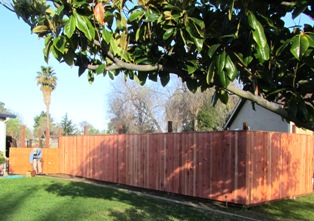
Carlos Carvajal, my architect-designer husband, near the fence we have been building for our neighbors
My husband is good at what he does. His highly developed aesthetic sense for design and sense of proportion and drive for perfection has proven invaluable in the projects he designs and builds. For the last two weeks, he’s been working one farmette over, replacing an old fence and crafting a trellis to support a gorgeous Japanese wisteria about to bloom.
I’ve been helping on the days he doesn’t have extra workers. Although I’ve helped him build fences on our property, the fence for our neighbors was a bit different. It would include supports for a lattice and would extend about 100 feet in length between the two properties.
Our neighbors are lovely and the building brought everyone together. We shared bottles of water and cups of juice, noonday meals, and lots of conversation. We worked through the weekend and since yesterday was Sunday, we even met extended family members who came to visit and to observe the fence building that was going on.
We shared a lovely Saturday lunch, thanks to the neighbors on one side of the fence and a beautiful Sunday lunch, gratis the neighbors on the other side of the fence. When the sun grew low on Sunday afternoon, yet another neighbor invited us over for a sumptuous meal of salad and grilled salmon. While the salmon cooked, we plucked two huge bunches of leaf lettuce from my garden and rolled lettuce leaves around slices of sheep’s milk cheese and sardines. The food went down perfectly with a central coast zinfandel from the Sterling vineyards.
I almost hate to have the fence building end. It’s been a wonderful experience to learn about the families living nearby and to share our love of our construction and gardening with them. In fact, it’s been the discussions about gardening that have proved for me most gratifying. I’ve enjoyed seeing their fruit trees in bloom and learning gardening tips they have shared.
Some people might believe that putting up fences hinders the fostering of neighborly relationships, but I’d have to say that it was the fence construction that helped us get to know our neighbors better.
Spring’s Ever-Evolving Palette of Colors
Rising before the sun does ensures that I have quiet time to stroll around the fecund farmette. It’s my time to contemplate my writing project before tackling the work and also to feel gratitude for the life I have here in rural Concord, living close to nature.
As the sun breaks over the horizon, splaying out across orchard, I walk to each fruit tree and study the the way the sunlight illuminates the swollen buds that look like little jewels. Many have already burst open along the branches and some branches have even leafed out.
Along the back of our property, tree canopies of pink and white signal that the apricot, plum, apple, almond, and peaches already have broken dormancy. The hachiya persimmons and the Tilton apricots that we planted on the eastern side of the property, however, are still “sleeping.” We moved the Lady Banks climbing roses over there, too, to make way for more renovation work near the house.
The French perfume and Spanish lavenders add a deep purple hue to the ever-evolving palette of spring color. Noticing a honeybee on the lavender, I thank the Creator for its presence. I much prefer the bees doing the pollinating than having to do it by hand as a friend recently told me she had to do with her fruit trees in Santa Cruz County.
Seemingly overnight, the rhubarb sent upward a giant spike with what appears to be a bloom. This hasn’t happened before to these plants, so I’ll need to cut that bloom in order to focus the plant’s energy into forming the cherry-colored stalks. The leaves and bloom would not be edible–they’re poisonous. The stalks, however, are delicious in pies.
As the sun continues to climb, I head for the house and a pot of hot coffee. Time to go to work. I’ll take a break later and stroll around outdoors to discover what I might not have noticed on my earlier walk.
Sweet Ending to a Sour Spat
In virtually every relationship at some point, spats happen. Here on the farmette, my husband and I agree most of the time, whether the issue is about plants, animals, or us. But when we don’t agree, buttons get pushed and, sadly, anger seems to rise with the decibel levels of our voices.
After the argument is over, we both feel the tension released but the wounding remains in our hearts. We try to find our way back to the other. Sometimes it requires building bridges. I guess that has been the process of marital relationships since pair-bonding began.
Recently, my spouse did two wonderful things following our “disagreement.” He apologized (I did, too)) and he then took off in his pickup, returning home home with an angel statue that now stands in my garden to remind us to be gentle and kind to each other. He also brought sweets and the symbolism didn’t need to be explained.
Quarreling is awful. He hates it. I hate it. But we work so very hard here on this farmette, trying to create shelter (still) while we develop the land. It’s not an easy business. Being too tired to think straight as a reason why you lashed out at the person who should be the most important individual in your life is a terrible excuse.
It’s a better idea to own up to your part in the drama, do what you can to make things right, forgive, and forget. Express tenderness when making up; that way, the ending of hostilities becomes all the sweeter.
Wisteria Adds Drama to an Arbor or Trellis
I love the look of an arbor or trellis that makes a classical architectural statement in the garden. My husband Carlos has built a few of these. Most recently, he created a lovely trellis to support a decades-old wisteria that a neighbor had been growing in her garden.
Wisteria is a deciduous vine, meaning it loses its leaves in the winter and goes dormant. These vines are long lived, can be quite thick in diameter, and have lovely bracts of flowers in the spring, even before they sprout leaves.
It’s best to purchase wisteria that has already been grafted onto root stock or that has been grown from a cutting. These vines aren’t particular about soil, but they do need plenty of water and good drainage.
The other requirements are pruning and training. Wisteria can grow as much as 20 to 30 feet during the first year. I had a plant in San Jose that climbed a trellis and spilled over onto the roof in its very first year in that location.
I like tying the vines and the streamers to support them. Wisterias can be trained as shrubs (albeit large ones) or even as small trees. If planted on a bank or berm, they can spread quickly to vigorously cover the area.
I grew Wisteria floribunda in my San Jose garden, but here I’ve chosen Wisteria senesis (Chinese Wisteria) for the Henny Penny Farmette patio arbor (that we have yet to install). Chinese Wisteria blooms all at once in a beautiful violet-blue color before it leafs out in April-May. The blooms, which are more spectacular than the Japanese wisteria, are only marginally fragrant.
There is another variety of wisteria–Wisteria venustra–known as silky wisteria. The flowers are very large, long-stalked, and white. The plant blooms in short, heavy clusters that open all at once. Leaves break open in April. Another cultivar–Wisteria violacea has purple-blue flowers that are quite fragrant.
If you already have an amazing trellis or arbor, why not plant a wisteria next to it to add drama to your garden? It’s a vine sure to please year after year with ever-more spectacular blooms.
Spring and Strawberries Go Together
One of the easiest plants to grow, strawberries reward you with ripe, red, luscious fruit as early as April in California and Florida, and a couple of months later for the rest of the country.
I’ve planted dozens of strawberry plants in four-by-six- foot boxes that have a depth of around 12 inches. Most strawberry plants spread through runners. These runners are long, thin shoots that have leaves at their tips. Where the tips touch the soil, they root. The roots create daughter plants from the mother plants. This is good because you want to rejuvenate the beds to keep yields high. Otherwise, you’ll need to start with new plants every few seasons.
Strawberry plants love full sun and a sandy-loamy type of soil with good drainage.They need about an inch of water per week. If there is too much water and the drainage is not adequate, your berries may develop gray mold that rots the berries. The best way to deal with gray mold is to monitor the growing bed, keep it weed free, and pluck off any damaged or moldy fruit.
You’ll find four basic types of strawberries to choose from when you purchase your plants. June bearing berries produce their main crop in June with early, mid-season, and late-season cultivars.
Ever-bearing produce the main crop in June and a smaller crop in late August and otherwise produce a few berries throughout the summer. They have runners but far fewer than the June bearing berries that generate lots of runners that rapidly spread throughout the berry bed or box.
Day-neutrals are productive from June through August or until frost in Northern areas of the United States. Alpine strawberry plants produce smaller berries through summer until frost and have no runners.
I love home-grown berries. They are not necessarily as large as commercially grown strawberries, but mine are organic and the crop as bountiful as I want. There are enough berries to fill my morning bowl of yogurt, nuts, and honey and sometimes even enough berries to make jam. They are so easy to grow, I’ve planted two big earth boxes of them and am adding two more this year.
 Facebook
Facebook Goodreads
Goodreads LinkedIn
LinkedIn Meera Lester
Meera Lester Twitter
Twitter




